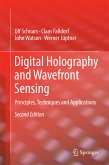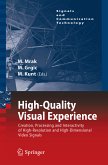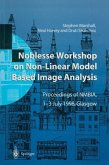3DTV will require the integration of a diversity of key technologies from computing to graphics, imaging to display, and signal processing to communications. The scope of this book reflects this diversity: different chapters deal with different stages of an end-to-end 3DTV system such as capture, representation, coding, transmission, and display. Both autostereoscopic techniques which eliminate the need for special glasses and allow viewer movement, and holographic approaches which have the potential to provide the truest three-dimensional images, are covered. Some chapters discuss current research trends in 3DTV technology, while others address underlying topics.
This book, the condensed result of an extensive European project developing the future of 3D-Television, is essential to those with an interest in 3DTV-related research or applications, and also of interest to those who, while not directly working on 3DTV, work in areas which developments in 3DTV may touch, such as multimedia, computer games, virtual reality, medical imaging, and scientific simulation.
Dieser Download kann aus rechtlichen Gründen nur mit Rechnungsadresse in A, B, BG, CY, CZ, D, DK, EW, E, FIN, F, GR, HR, H, IRL, I, LT, L, LR, M, NL, PL, P, R, S, SLO, SK ausgeliefert werden.









